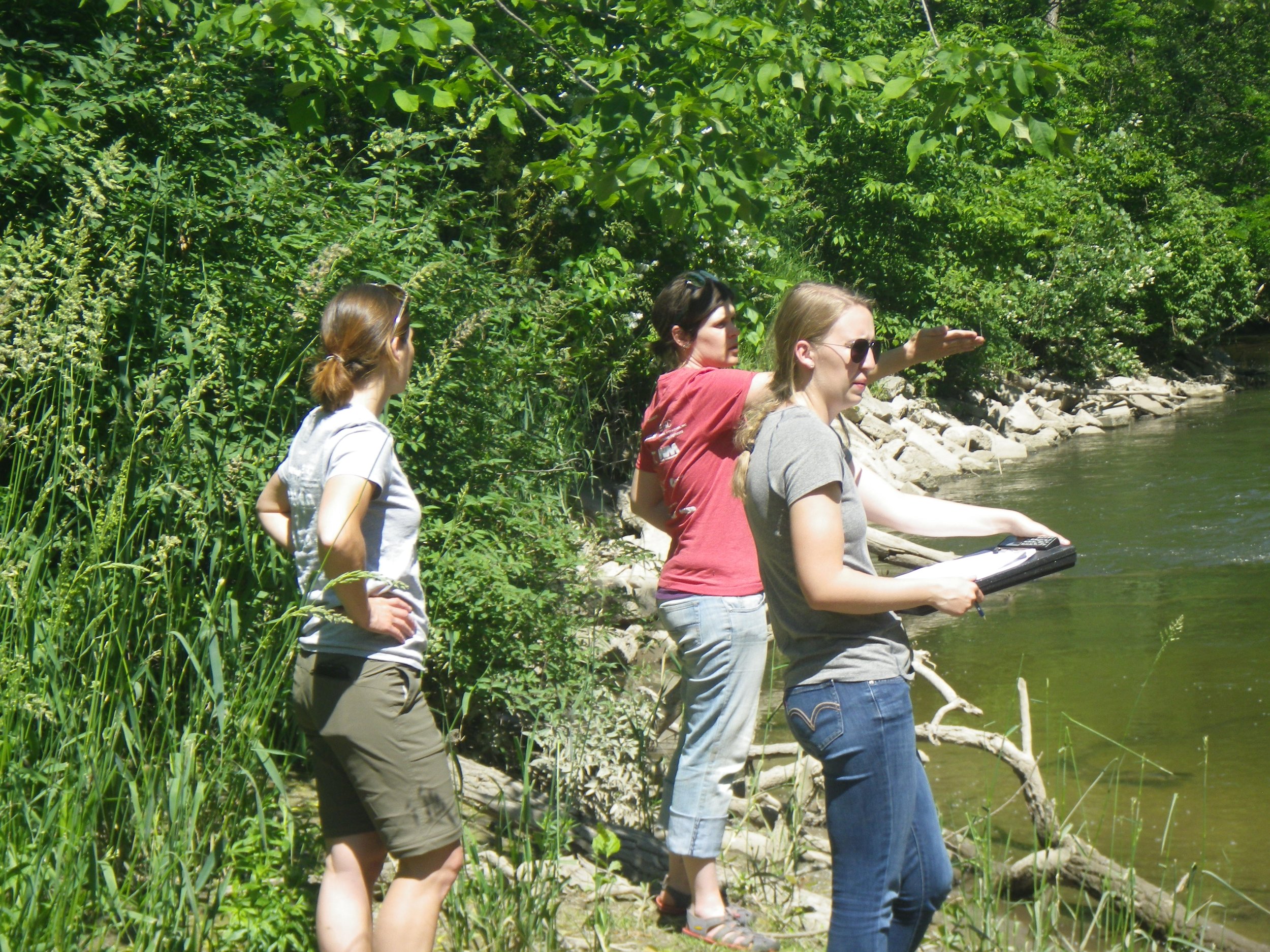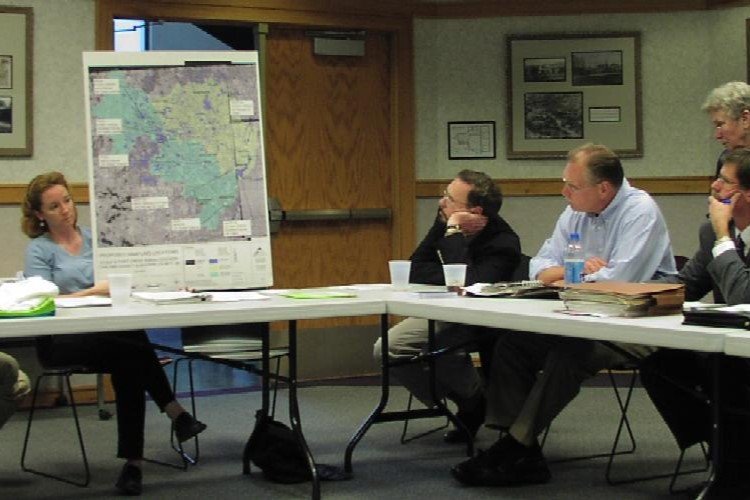
What We Do
The Clinton River Watershed Council (CRWC) is dedicated to protecting, enhancing, and celebrating the Clinton River, its watershed, and Lake St. Clair. That mission drives everything we do. Each of our programs, events, initiatives, and activities fit into the four pillars of our work: Protect, Enhance, Celebrate, and Engage.
Protect
To protect water resources in southeast Michigan, CRWC focuses on K-12 Education, Community Education, and Stewardship. By learning about the watershed and engaging in stewardship opportunities, residents and communities have the opportunity to take their first steps into the world of environmental conservation and participate the care of local water resources.
K-12 EDUCATION
K-12 education plays a pivotal role in CRWC’s Mission. Incorporating watershed-related topics into schools through presentations, workshops, and programs like Stream Leaders and Water Festivals allows students to develop a deeper understanding of the watershed's significance, ecosystems, and the impacts of human activities. Through hands-on learning experiences, future leaders and citizens are empowered with the knowledge and skills needed to make informed decisions, advocate for sustainable practices, and protect the Clinton River watershed for years to come.
COMMUNITY EDUCATION
Community education serves as a driving force in protecting the Clinton River watershed. Through resident green infrastructure programs, native plants, Stormwater Education, and educational programs like RiverSafe LakeSafe, community education reaches a diverse audience of adults, organizations, and community leaders within the watershed. By providing information about waterway health, conservation practices, and opportunities for involvement, community education encourages active participation in clean-up efforts and restoration projects.
STEWARDSHIP
Stewardship initiatives, including Weekly Clean, private clean-ups, and the annual Clinton Clean-up, play a pivotal role in safeguarding the health and vitality of the Clinton River watershed and its interconnected ecosystem with Lake St. Clair. These ongoing efforts demonstrate the commitment of dedicated volunteers, residents, and organizations toward preserving these vital water bodies. Clean-ups help maintain the cleanliness of riverbanks, tributaries, and surrounding areas, preventing debris and pollutants from entering the waterways. Through stewardship, vital water resources are protected, ensuring cleaner and healthier environments for wildlife, recreational activities, and the well-being of local communities that rely on the Clinton River watershed and Lake St. Clair.
Enhance
RESTORATION, MONITORING, & DATA MANAGEMENT:
Establishing the current conditions of a river, stream, or wetland is an important step in enhancing current conditions. This will help determine if a restoration is needed or if a project has achieved what was intended. By monitoring water quality at restoration projects before and after completion, we can identify areas of importance and help to conclude techniques are viable and successful for future projects.
CRWC has performed ecological surveys, ranging from small-scale searches to large watershed wide projects. CRWC staff have extensive experience in field data collection and procedures for accurately quantifying habitat quality. CRWC analyzes most data in-house and provides stakeholders with detailed project reports following restoration.
CRWC examines ecological parameters depending on the project scope. A non-exhaustive general list of parameters used in project evaluation is below.
Once data has been collected and analyzed CRWC compiles a project report which is provided to stakeholders and interested parties upon request. Data is also housed at CRWC for future use and access. CRWC uses the data collected to expand our knowledge of watershed assets and ecological health.
-

MACROINVERTEBRATE INDICES
-

HABITAT INDICES
-

RIVER & STREAM HABITAT MAPPING
(Bedform Mapping)
-

LARGE WOODY DEBRIS INVENTORIES
-

INVASIVE SPECIES INVENTORIES
-

RIVER SURVEYS
-

EROSION MONITORING
-

TEMPERATURE MONITORING
-

WATER QUALITY PARAMETERS
(TSS, TDS, pH, Dissolved Oxygen, etc.)
-

FROG & TOAD SURVEYS
-

WETLAND MONITORING
Celebrate
Celebrating the Clinton River, its watershed, and Lake St. Clair is one of the best ways we have to invite others to join us in the outdoors. By bringing together residents, volunteers, organizations, and stakeholders, these celebrations create a sense of unity and shared responsibility, inspiring collective action toward conservation efforts.
RECREATION & ACCESS
Recreation and access to recreational activities are fundamental components of celebrating and cherishing local water resources like the Clinton River. By removing barriers to entry for activities such as boating, fishing, kayaking, hiking, and cycling through our Nourished By Nature program, these water bodies become vibrant hubs for community engagement and enjoyment. Enabling public access to recreation along the Clinton River Water Trail encourages a love for the outdoors, ensuring these local water resources remain cherished and protected.
WATERTOWNS
WaterTowns® is a community-based placemaking initiative designed to help cities, towns, and villages in the watershed leverage assets of the Clinton River and Lake St. Clair to help improve water quality and alleviate climate change impacts by promoting and implementing green infrastructure and advancing water-oriented community, artistic, and recreation opportunities.
CELEBRATIONS
Events such as CRWC’s Annual Meeting, Crafts on the Clinton, River Day, and partner events like Paddlepalooza and Sprint n Splash play a crucial role in CRWC’s mission. These gatherings celebrate the river's cultural importance, creating a joyful atmosphere that instills pride and appreciation for this local waterway. These celebrations facilitate collaborations among CRWC, local organizations, businesses, and the community, forging partnerships that strengthen initiatives focused on the protection and enhancement of the Clinton River, its watershed, and Lake St. Clair.
Engage
Engaging residents, businesses, and communities cultivates a sense of ownership and active participation in CRWC's initiatives. By hosting information and resources, engaging with businesses, and offering membership opportunities, CRWC invites others to participate in our mission.
SCIENCE INFORMATION
By providing accessible information on native plants, water quality, invasive species, the watershed, and more, community members can choose to learn about the watershed's ecological significance and the impact of human actions. CRWC is dedicated to hosting this information and connecting individuals who are interested in learning with the data and resources they need to be successful.
MEMBERSHIP & CONNECTIONS
Memberships and sponsorships provide the opportunity for businesses and residents the opportunity to become a part of our work and forge a long-term connection with our region's local waterways. Both memberships and sponsorships empower CRWC to expand its conservation efforts, engage the community, and implement impactful initiatives, ensuring the sustained protection and enhancement of the Clinton River watershed for generations to come.
THANK YOU TO OUR PARTNERS















